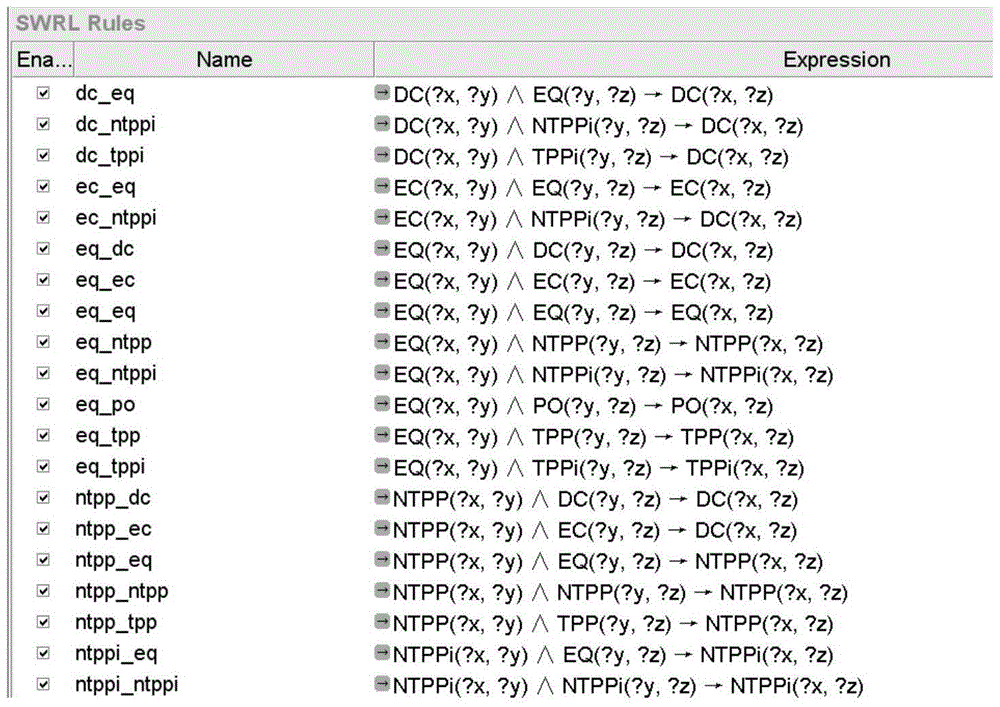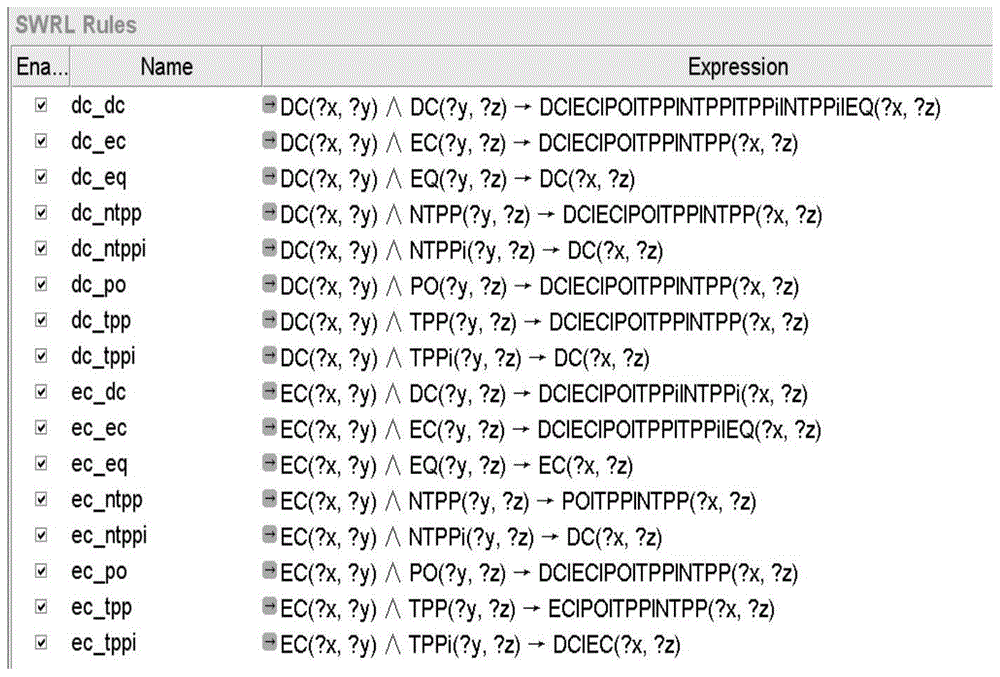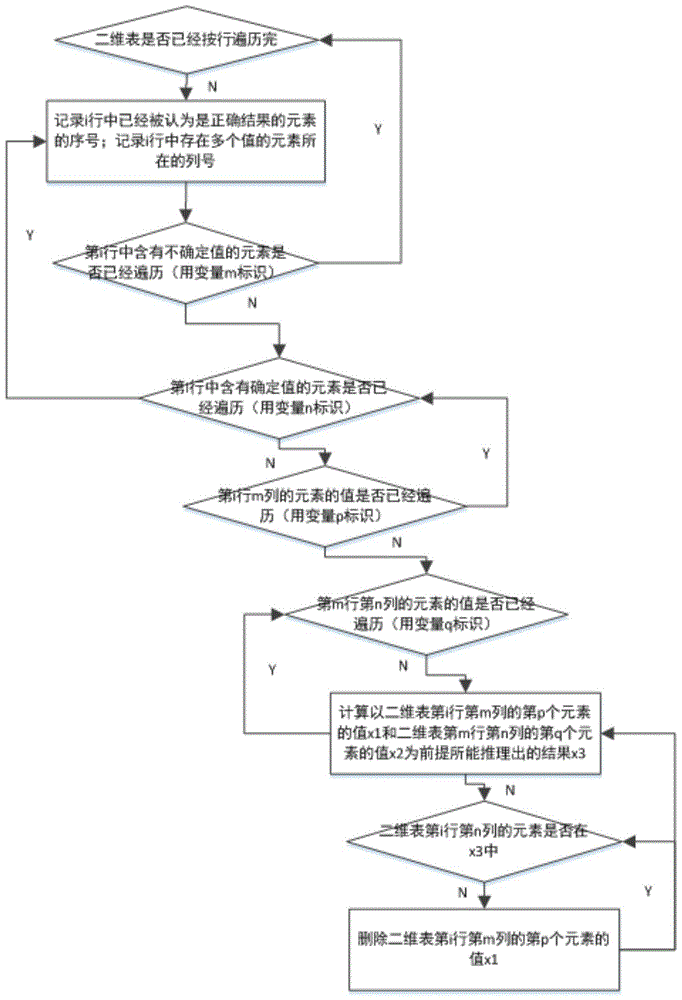Qualitative spatial relation reasoning method based on rules and constraint satisfaction
A qualitative spatial relationship and spatial relationship technology, applied in the field of spatial information, can solve problems such as map matching errors, influence of map planning and map reconstruction, time-consuming, etc., to achieve the effect of ensuring consistency, avoiding possible defects, and improving efficiency
- Summary
- Abstract
- Description
- Claims
- Application Information
AI Technical Summary
Problems solved by technology
Method used
Image
Examples
Embodiment Construction
[0050] 1. Theoretical basis
[0051] (1) Inference rules
[0052] A rule consists of a header, which is an atomic formula, and a body, which is a sequence of atomic formulas. If every atomic formula in the body holds true, then the facts described in the header can be deduced. Rule-based spatial relationship reasoning refers to the process of using inference rules to obtain implicit spatial relationships on the basis of existing spatial relationships. SWRL is a language that presents rules in a semantic manner. It has rich representations and supports embedded custom rules, which greatly facilitates the expansion of the knowledge base and provides a richer knowledge base for reasoning. Using SWRL to describe inference rules is beneficial to express the information in the combination table as rules.
[0053] (2) Constraint satisfaction problem
[0054] Constraint Satisfaction Problem (ConstraintSatisfactionProblem, CSP) is a research hotspot in the field of artificial intel...
PUM
 Login to View More
Login to View More Abstract
Description
Claims
Application Information
 Login to View More
Login to View More - R&D
- Intellectual Property
- Life Sciences
- Materials
- Tech Scout
- Unparalleled Data Quality
- Higher Quality Content
- 60% Fewer Hallucinations
Browse by: Latest US Patents, China's latest patents, Technical Efficacy Thesaurus, Application Domain, Technology Topic, Popular Technical Reports.
© 2025 PatSnap. All rights reserved.Legal|Privacy policy|Modern Slavery Act Transparency Statement|Sitemap|About US| Contact US: help@patsnap.com



